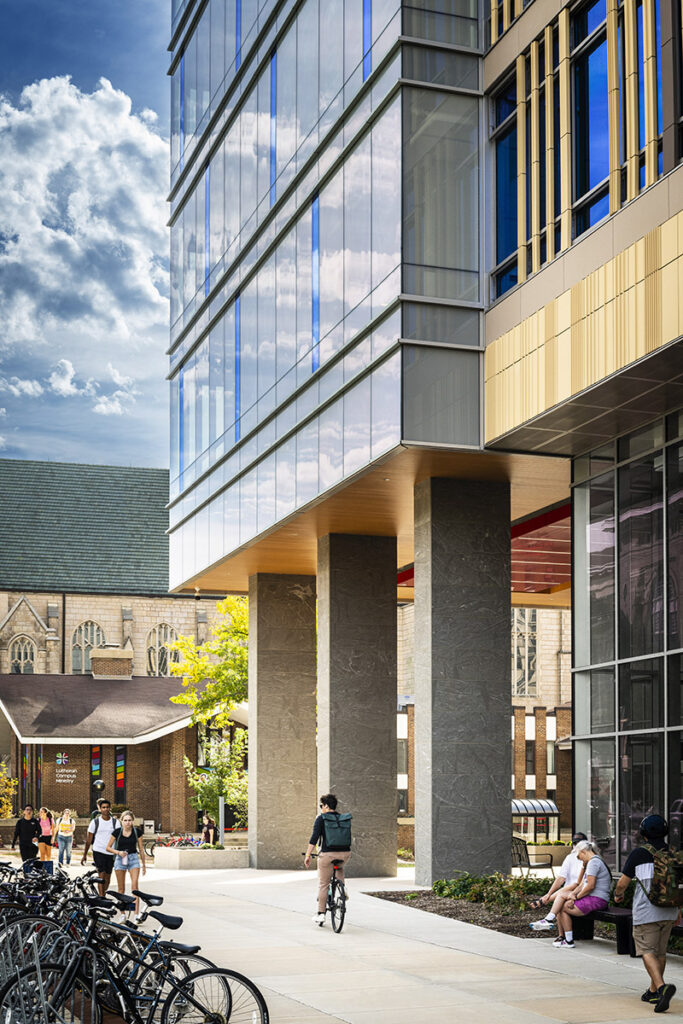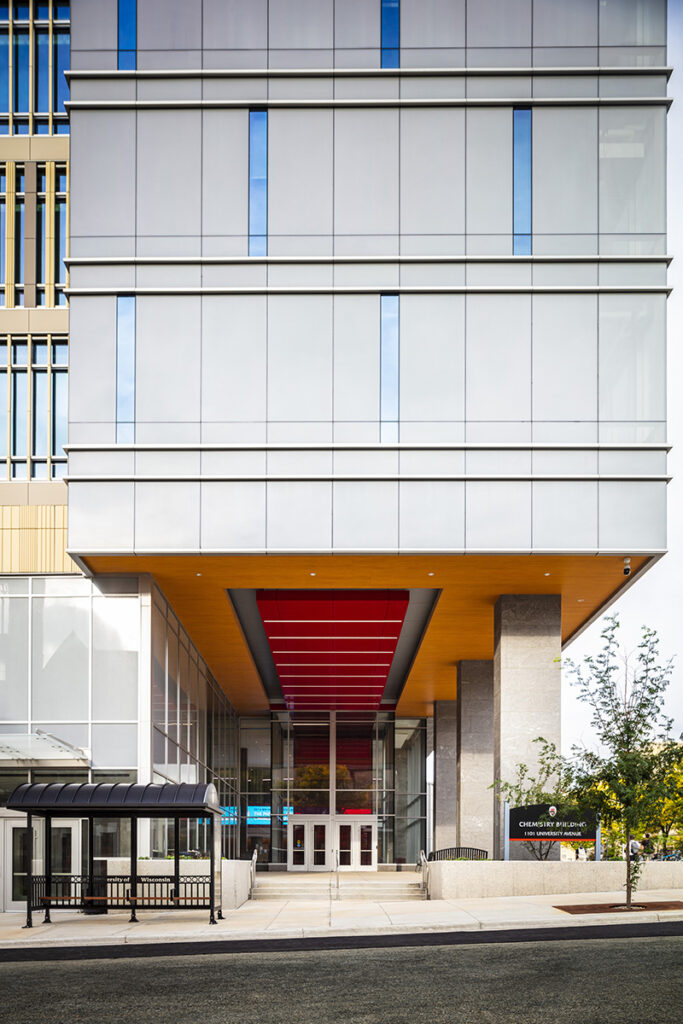This project was designed in partnership with Ballinger
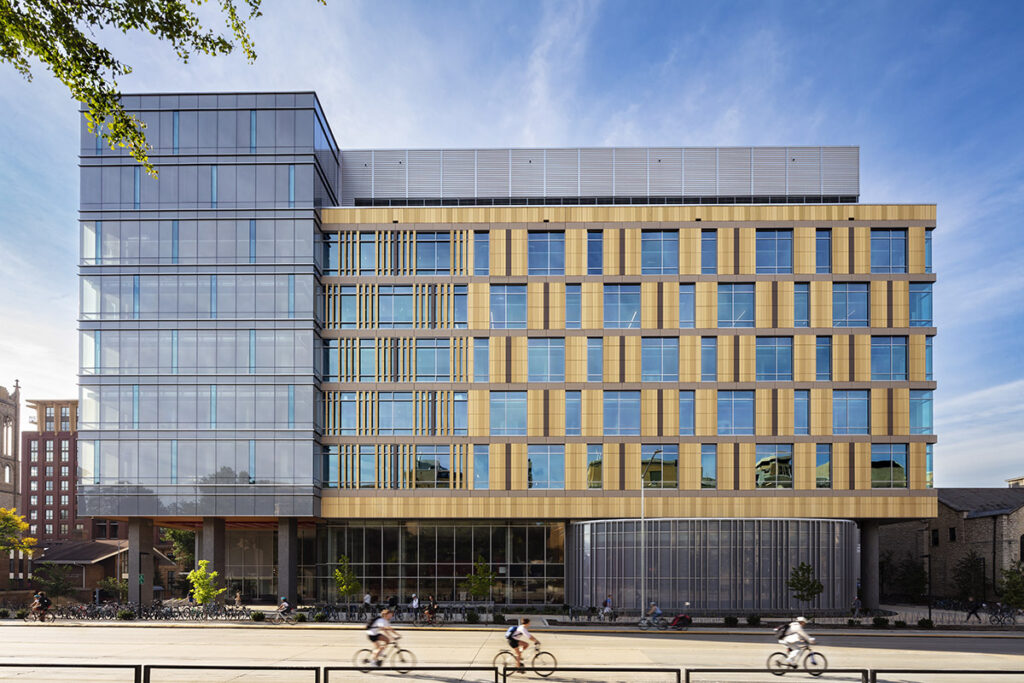
Awards
American Council of Engineering Companies of Wisconsin (ACEC WI)
Engineering Excellence Award
2023
The Daily Reporter
Top Projects of 2022 List
2022
ASID Wisconsin
Silver Design Award - FF&E Planning
2023
Objective:
World-Class Research
This eight-story, 209,504 SF addition and renovation to the chemistry building was a huge undertaking by Strang and the University of Wisconsin – Madison to bring this vital education facility up to date. This facility is a world-class research institution, and this $100 million project serves approximately 7,000 undergraduates each semester. New and remodeled space will house lecture halls, active learning classrooms, faculty and TA/FA offices, instructional teaching spaces, and laboratories.
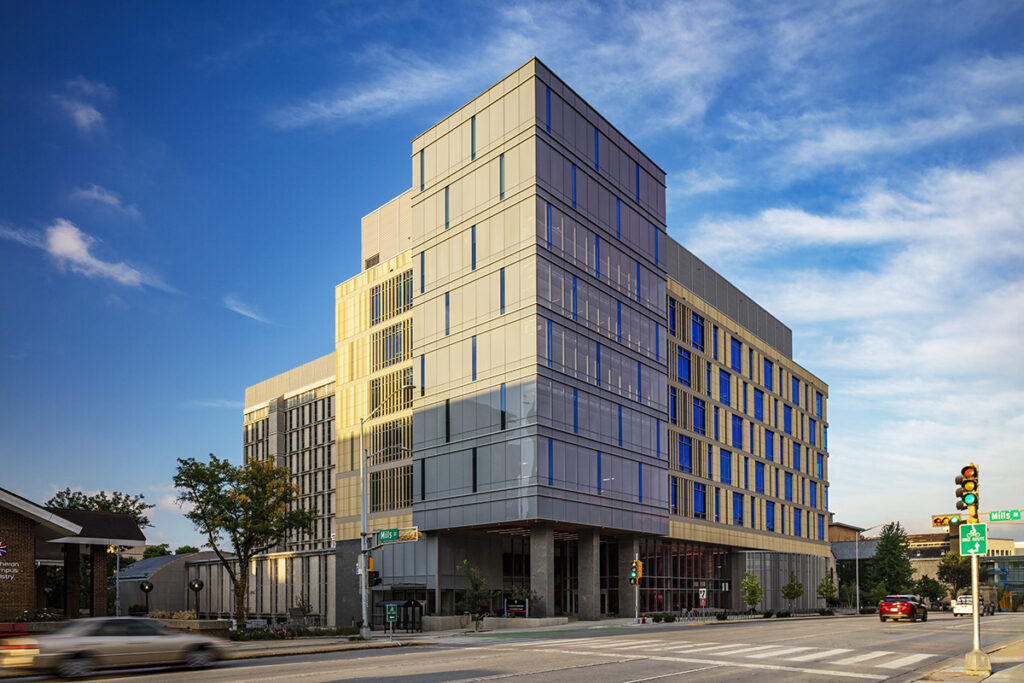
SOLUTION:
Active Learning
Special spaces in this building include the learning studio, which is a large-scale, active learning classroom to replace the traditional lecture hall style classroom. The active learning classroom creates an environment that facilitates engagement, access to technology, and small group discussion. This helps to increase student engagement and comprehension in learning. The flexibility of the active learning space ranges from hosting poster sessions of graduate research projects with 16 active learning stations (8 students each), to a 300-seat lecture room, to a 500-person reception hall. Technology, furnishings, architecture, and MEP systems all respond to this high level of flexibility.
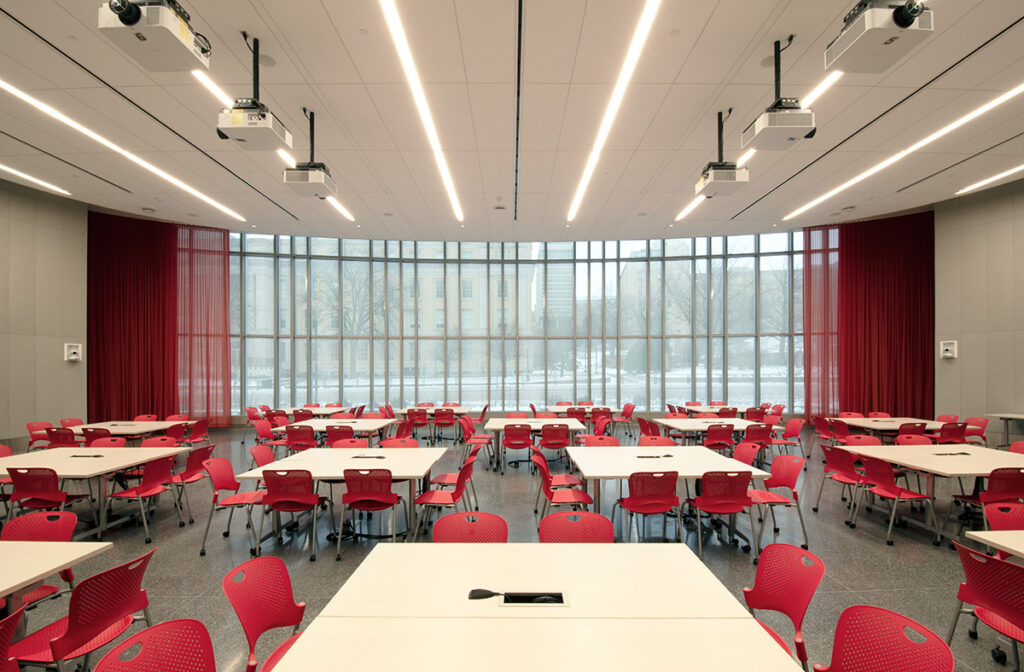
“This project features renovated general chemistry labs, new and renovated organic and analytical chemistry labs, and designs that will transform the chemistry library into an information commons area.”
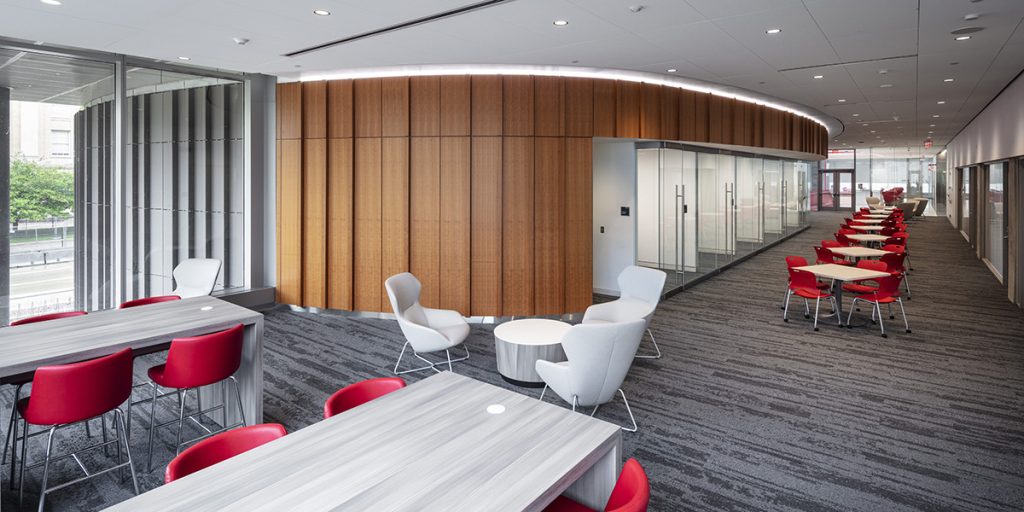
Learning Library
Another innovation in this project’s learning spaces is found in the library. The library has been specifically redesigned to shift focus from book storage to study space. Book storage has been reduced to a few stacks in the back as the facility shifts to embrace technology. Also included in this space is the Information Commons with settings for solo study, small group, and large group study. This takes into consideration the different learning and studying needs of individual students and gives them the flexibility to choose the environment that suites their needs.
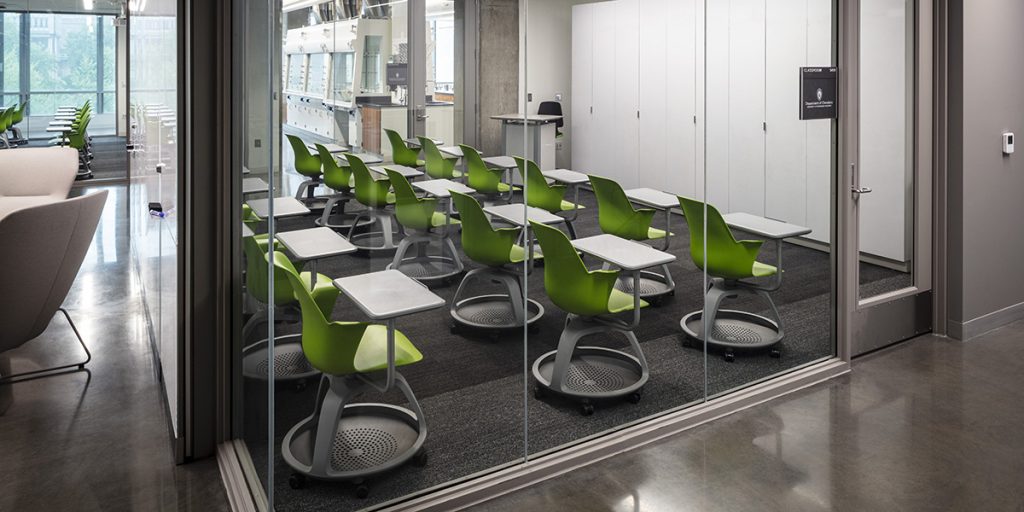
Write-Up Rooms
Through detailed discussion with the faculty and department administrators, the implementation of Write-Up rooms was also developed and introduced to the program. The Write-Up rooms provides student classroom space outside the wet laboratories where students can work without PPE to prepare for Lab time and to complete their notebooks once experiments are complete. This new approach provides a safer environment for both students and teaching assistants.
